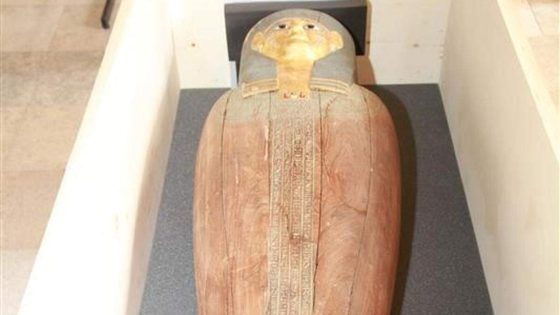The return of an ancient Egyptian wooden sarcophagus to Egypt marks a significant moment in cultural heritage preservation. This remarkable artefact, dating back to the fourth or third century BCE, was seized in Brussels a decade ago. On 2025-07-12 02:15:00, Belgian authorities officially handed over the sarcophagus and accompanying items to the Egyptian ambassador, closing a lengthy legal chapter.
- Wooden sarcophagus dates from 3rd-4th century BCE
- Sarcophagus depicts god Osiris with gold, blue
- Hieroglyphs identify occupant as Pa-di-Hor-pa-khered
- Artifacts returned to Egypt after legal process
- Items stored at Brussels Royal Museums temporarily
- Egyptian ambassador received artifacts in Europe
The sarcophagus is anthropomorphic, crafted to resemble the mummified man it once contained. Its golden face and blue hair symbolize transformation into Osiris, the god of the underworld. Intricate details like coloured glass inlays and fine woodcarving suggest it belonged to an Egyptian elite. How did such an artefact end up in Belgium, and what does its return mean for local museums?
Understanding the significance of this sarcophagus offers insight into Belgium’s role in protecting cultural treasures. The next section provides a concise overview of this important repatriation.
Why is this repatriation crucial? It raises questions about the responsibility of museums and customs authorities in preserving history. The sarcophagus’s return also reflects Belgium’s respect for rightful ownership and international law. Key points include:
- The sarcophagus belonged to Pa-di-Hor-pa-khered, a high-ranking Egyptian, as deciphered from hieroglyphs.
- Belgium safeguarded the artefact in the Royal Museums of Art and History during legal proceedings.
- The handover involved diplomatic representatives from Egypt in Belgium, Luxembourg, the EU, and NATO.
As Belgium continues to balance heritage preservation and international collaboration, will more artefacts find their way back to their countries of origin? Belgian institutions and the public alike should remain engaged in these efforts, ensuring respect for history and cultural identity worldwide.

































